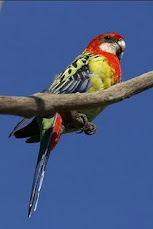Flamingo
CHILEAN FLAMINGO
Location: South America
Habitat: Shallow, salty lakes and lagoons
Chilean flamingos stand four to five feet tall and can weigh anywhere from 13-16 pounds. They have a long neck and long, slender legs. Their bill is bent downward in the middle. Most of their body is coverd in pale pink feathers with darker pink and black wings. Their legs are dull yellow or yellow-gray with dark pink bands at the joints and pink feet.
Flamingos will lock their “knees” (which are really their ankles) and stand on one leg. Standing in this manner helps them to conserve heat. They typically will stand facing into the wind or rain so that the water does not get into their feathers. They have an excellent sense of hearing, but a very poor sense of smell.
These birds are social, usually living in flocks numbering in the thousands. When in these large groups, they can be quite loud while making their deep, honking noises along with other vocalizations, such as grunting and howling. They do everything in these groups including breeding, feeding and flying. The large group is also their main defense. Having so many individuals increases the possibility of predator sightings, but decreases the probability of an individual becoming prey. Their main predators are humans and gulls, which eat their eggs.
Flamingos are filter feeders, eating aquatic invertebrates, seeds and algae from shallow water and mud. They walk along the bottom of the lake kicking up the mud with their feet. Water is sucked into their beak. As their tongue pushes the water out, it is filtered through a row of spines, or lamellae, along the edge of the bill, which traps the food. The pink coloration comes from pigments, called caretonoids, in the tiny animals they eat. In most captive populations, this pink color must be artificially added to the diet.
The courtship displays are quite elaborate. The males and females will perform a number of head and wing movements which look similar to everyday preening, but are much more rigid. Flamingos make their nests out of mud by piling the mud and forming it into a large mound about 15 inches in diameter and 1 ½ -2 feet tall. The female makes an indentation on the top where she will lay her egg. Incubation lasts 27-31 days, and both the mother and father sit on the egg. When it hatches, the chick is covered with gray downy feathers. Their beaks are straight at birth so that they can be fed by regurgitation from their parents. After a few months the beak curves. They grow in their adult plumage after about two years. They become sexually mature at 6 years of age. The typical lifespan in the wild is up to 50 years.
The Chilean Flamingo is listed on the Convention on International Trade of Endangered Species (CITES) Appendix II. This appendix lists species that are in need of protection and are considered to be threatened, likely to become endangered, if trade is not regulated. All flamingo populations could easily undergo a decline because they are found in such large numbers, which are necessary for proper breeding, and also because of their fragile wetland habitats. Humans are the main threat for these birds due to either direct misuse of their home lands or from indirect damage such as changing characteristics of the land such as water levels.
DISCLAIMER
We are extending our courtesy to those peoples,websites, groups and communities. If any suggestions or complaints, please Email me..













